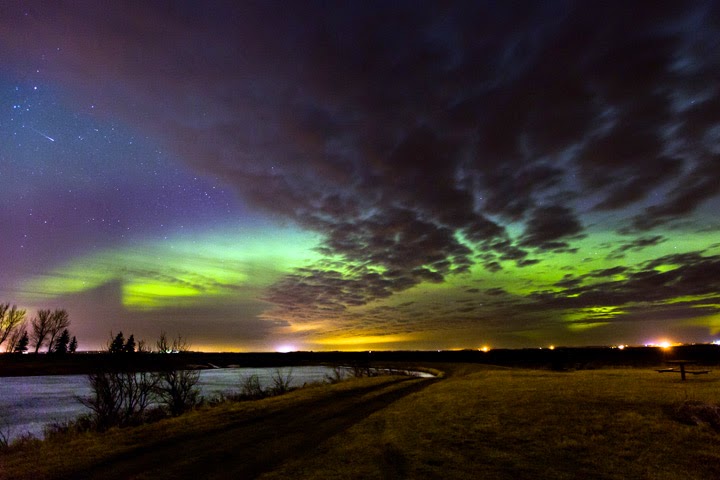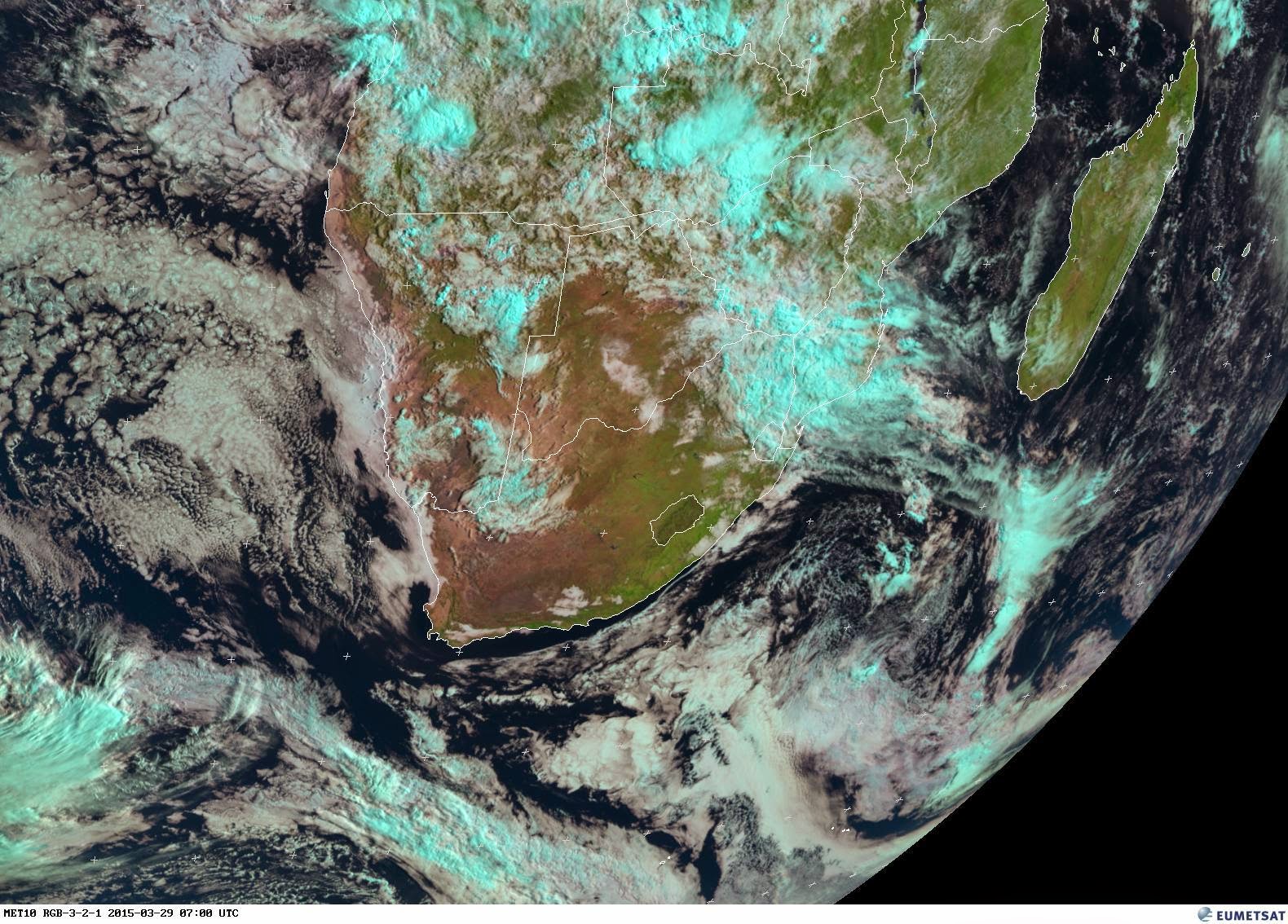Where does lightning flash most
frequently? According to satellite observations, it occurs more often
over land than over the oceans. And lightning seems to happen more often
closer to the equator.
The map above shows the average yearly counts of lightning flashes per square kilometer from 1995 to 2013. Areas with the fewest number of flashes each year are gray and purple; areas with the largest number of lightning flashes—as many as 150 per year per square kilometer—are bright pink.
The map is based on data collected from 1998–2013 by the Lightning Imaging Sensor (LIS) on NASA’s Tropical Rainfall Measuring Mission satellite, and from 1995–2000 by the Optical Transient Detector (OTD) on the OrbView-1/Microlab satellite. Flashes above 38 degrees North were observed by OTD only, as the satellite flew to higher latitudes.
The higher frequency of lighting over land makes sense because solid earth absorbs sunlight and heats up faster than water; this means there is stronger convection and greater atmospheric instability, leading to the formation of thunder and lightning producing storms.
According to NASA’s Daniel Cecil, a member of the Global Hydrology and Climate Center’s lightning team, the data also have revealed some interesting regional trends. For example, scientists have observed a large number of flashes during the month of May in the Brahmaputra Valley of far eastern India. The heating and weather patterns are unstable and changeable at that time—just before the onset of the monsoon, which brings plenty of rain but much less lightning. In contrast, locations in Central Africa and Northwestern South America have large amounts of lightning throughout the entire year.
As the map shows, the highest amounts of lightning flashes occur in the far eastern Democratic Republic of Congo, and Lake Maracaibo in northwestern Venezuela.
Cecil noted that more years of data has not necessarily brought notable big-picture differences when compared to the earlier maps. “The longer record allows us to more confidently identify some of these finer details,” he said. “We can examine seasonality, and variability through the day and year-to-year.”
The map above shows the average yearly counts of lightning flashes per square kilometer from 1995 to 2013. Areas with the fewest number of flashes each year are gray and purple; areas with the largest number of lightning flashes—as many as 150 per year per square kilometer—are bright pink.
The map is based on data collected from 1998–2013 by the Lightning Imaging Sensor (LIS) on NASA’s Tropical Rainfall Measuring Mission satellite, and from 1995–2000 by the Optical Transient Detector (OTD) on the OrbView-1/Microlab satellite. Flashes above 38 degrees North were observed by OTD only, as the satellite flew to higher latitudes.
The higher frequency of lighting over land makes sense because solid earth absorbs sunlight and heats up faster than water; this means there is stronger convection and greater atmospheric instability, leading to the formation of thunder and lightning producing storms.
According to NASA’s Daniel Cecil, a member of the Global Hydrology and Climate Center’s lightning team, the data also have revealed some interesting regional trends. For example, scientists have observed a large number of flashes during the month of May in the Brahmaputra Valley of far eastern India. The heating and weather patterns are unstable and changeable at that time—just before the onset of the monsoon, which brings plenty of rain but much less lightning. In contrast, locations in Central Africa and Northwestern South America have large amounts of lightning throughout the entire year.
As the map shows, the highest amounts of lightning flashes occur in the far eastern Democratic Republic of Congo, and Lake Maracaibo in northwestern Venezuela.
Cecil noted that more years of data has not necessarily brought notable big-picture differences when compared to the earlier maps. “The longer record allows us to more confidently identify some of these finer details,” he said. “We can examine seasonality, and variability through the day and year-to-year.”
References and Related Reading
- Cecil, D. et al. (2014, January) Gridded lightning climatology from TRMM-LIS and OTD: Dataset description. Atmospheric Research, 135-136 (2014), 404-414.
- Christian, H. et al. (2003, January) Global frequency and distribution of lightning as observed from space by the Optical Transient Detector. Journal of Geophysical Research: Atmospheres, 108 (D1), ACL 4-1—ACL 4-15.
- Lightning and Atmospheric Electricity Research at the GHCC, LIS/OTC Gridded Lightning Climatology Data Sets. Accessed March 30, 2015.
- NASA Earth Observatory (2006, June 23) Patterns of Lightning Activity.
- NASA Earth Observatory (2001, December 10) Where Lightning Strikes.
- NASA Earth Observatory (2014, March 23) Sensing Lightning from ISS.
NASA Earth Observatory image by Joshua Stevens using LIS/OTD data from the Global Hydrology and Climate Center Lightning Team. Caption by Kathryn Hansen.
- Instrument(s):
- TRMM - LIS


































